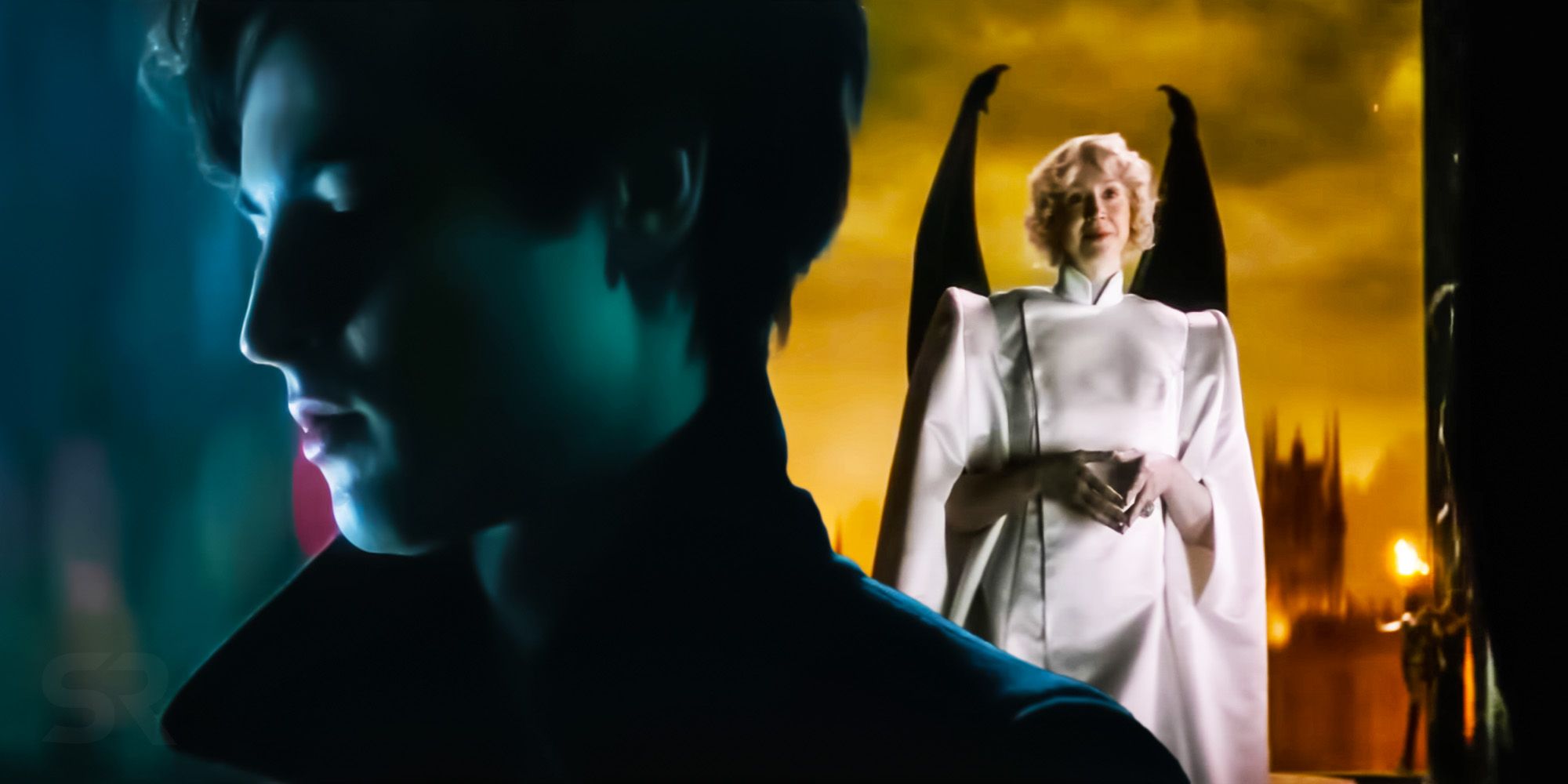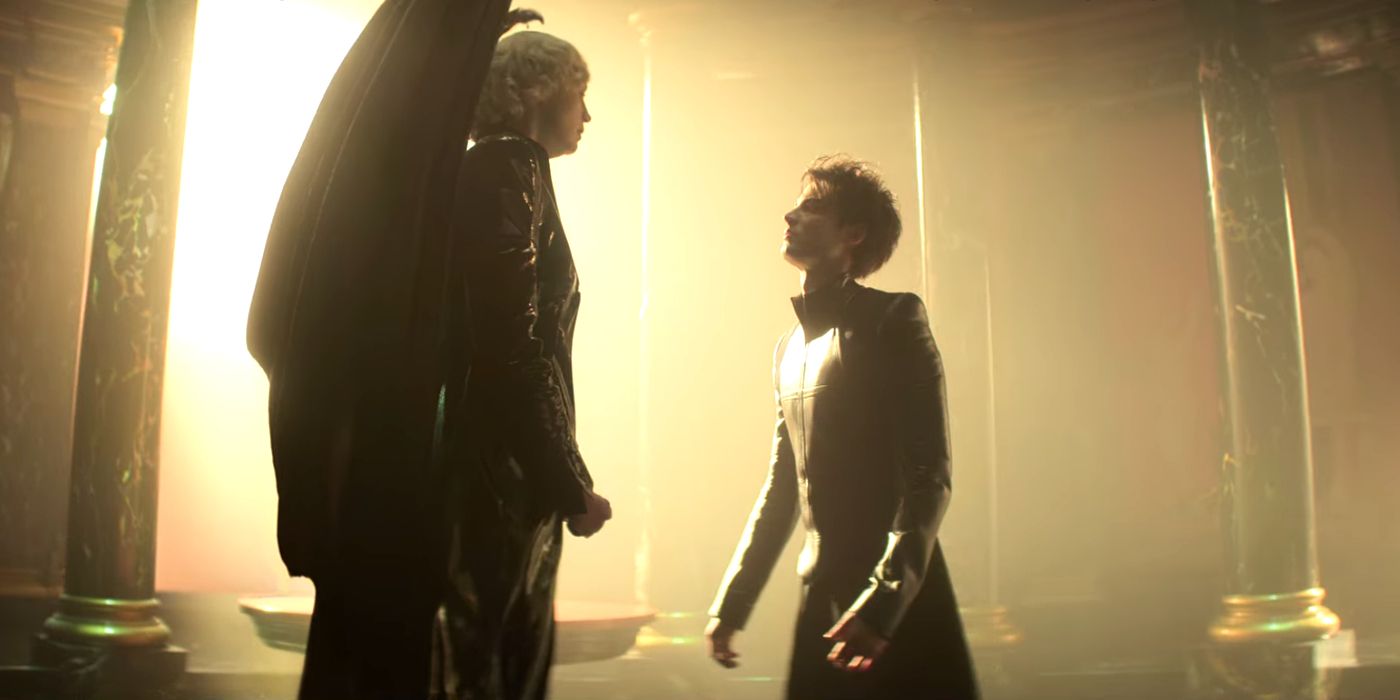Warning: SPOILERS for The Sandman Season 1.
Dream (Tom Sturridge) calls Lucifer Morningstar (Gwendoline Christie) "Lightbringer" in The Sandman for a few important reasons, including to show the Devil respect. The Sandman season 1 adapts the first two collected volumes of Neil Gaiman's beloved DC Comics saga, Preludes and Nocturnes and The Doll's House. Morpheus' confrontation with Lucifer in Hell is one of the thrilling highlights of the first batch of Sandman episodes, and it sets up a great deal of the future between Dream of the Endless and the fallen angel.
In The Sandman episode 4, "A Hope in Hell," Dream and Matthew the Raven (Patton Oswalt) descend into Hell in order to recover Morpheus' lost helmet. Dream's frightening headgear was traded to a demon named Choronzon (Munya Chawawa) by Ethel Cripps (Joely Richardson) in exchange for an amulet of protection. Choronzon refused to part with Dream's helmet and the demon challenged the dream king to play The Oldest Game, with the stakes of Morpheus remaining in Hell as a slave for eternity if he loses. Choronzon then named Lucifer Morningstar as his champion to face the Sandman in The Oldest Game. However, Dream of the Endless outwitted the Devil and won his helmet back. In turn, Lucifer was publicly humiliated in front of the assembled millions of Hell's demons. This led the seething Lucifer to swear revenge on the lord of the Dreaming.
Throughout The Sandman episode 4, Dream repeatedly refers to Lucifer as "Lightbringer." The main reason is that "Lucifer" literally means "bringer of light." Lucifer's true angelic name is Samael, but he was called Lucifer because he was the "Lightbringer," the first and most beautiful of God's angels. Samael was known among the Angelic Host as "the Lightbringer, the Morning Star," and Lucifer kept these names (while abandoning Samael) after he rebelled against God and was cast into Hell along with his followers 10 billion years ago. Dream calling Lucifer "Lightbringer" is a sign of respect, and the master of dreams is suitably reverential towards the Devil's name since Dream, himself, is known by many names like Morpheus, Oneiros, Lord Shaper, and, of course, the Sandman.
Why The Sandman Fears Lucifer Morningstar
Another reason why Dream is so careful with how he refers to Lucifer is that he rightfully fears the Devil. As the Sandman explained to Matthew, Lucifer Morningstar is far more powerful than the king of dreams is. The Devil may even be the most powerful being in existence besides God himself. Morpheus was even more cautious in "A Hope in Hell" because his own powers had been drastically lessened by the century he was imprisoned on Earth by Roderick Burgess (Charles Dance) and the theft of his symbols of office. Dream realized that he placed too much of his power and essence in the Sandman's tools like his pouch of dream sand and his dreamstone ruby. Morpheus was well-aware that he was no match for Lucifer in a direct confrontation, which he hoped to avoid. Worse, Dream entered Hell as an uninvited guest and, without his symbols of office, the Sandman was especially vulnerable, which Lucifer, of course, knew.
Dream used every tactic he could in order to avoid incurring Lucifer's wrath, which included respectfully calling the Devil "Lightbringer" every chance he got. Unfortunately, Choronzon placed Morpheus in an impossible situation that caused him to directly face Lucifer in The Oldest Game, and Dream had to win to save himself from an eternity of slavery in Hell. In The Sandman comics, it was Choronzon who played The Oldest Game against Dream, but Netflix's The Sandman raised the stakes by making Lucifer Dream's adversary. This only worsened the Devil's humiliation by publicly losing to The Sandman, leading Lucifer Morningstar to swear revenge on the master of dreams.
The Sandman Season 1 is streaming on Netflix.


